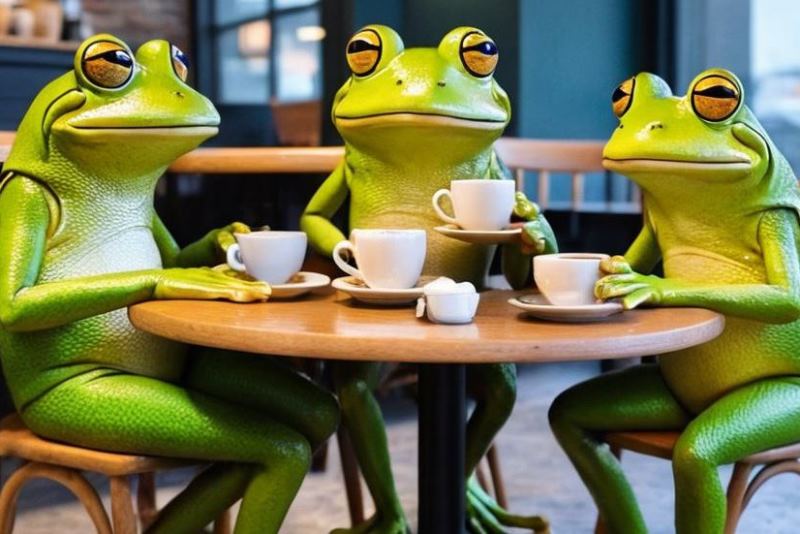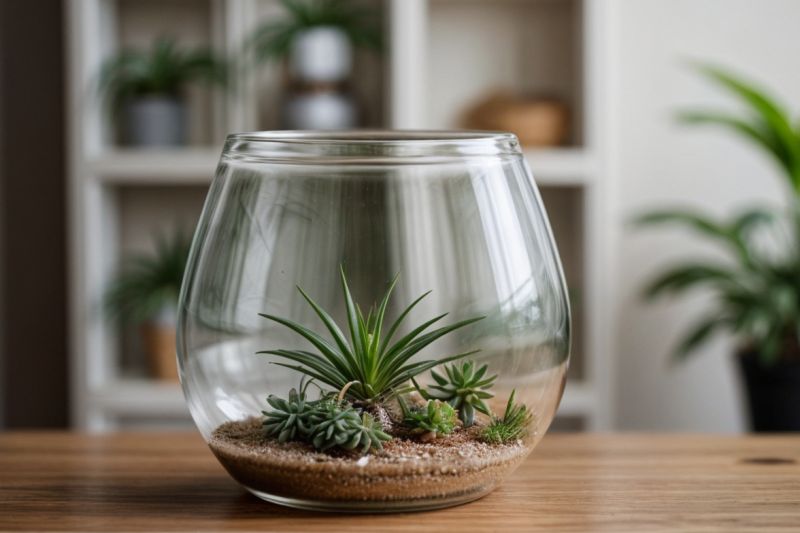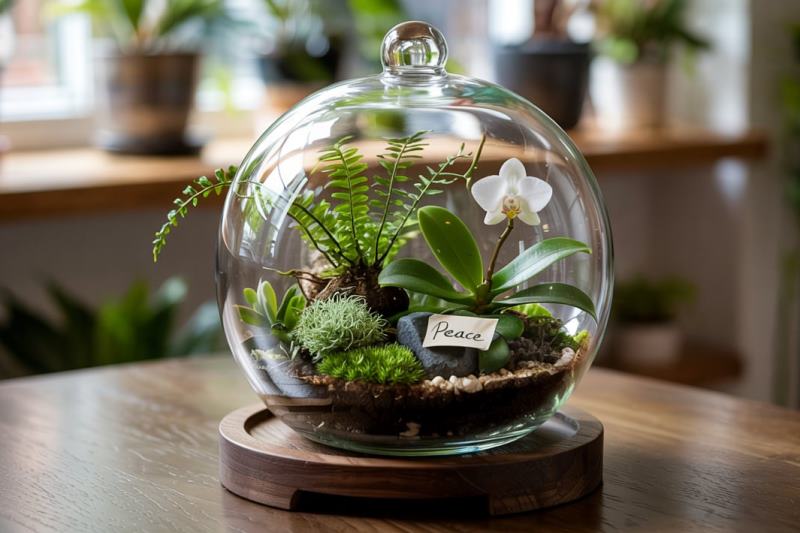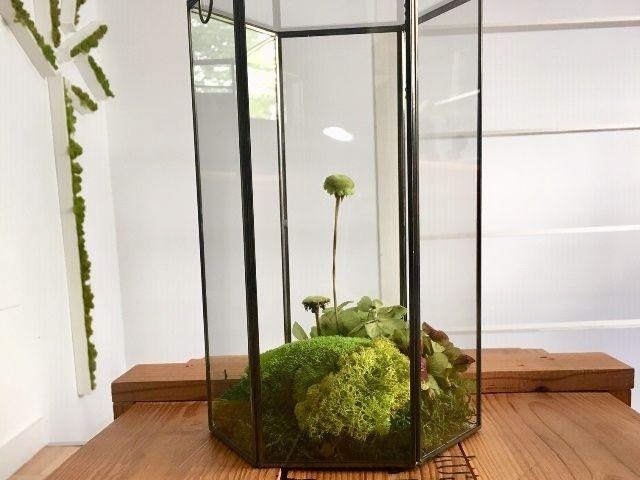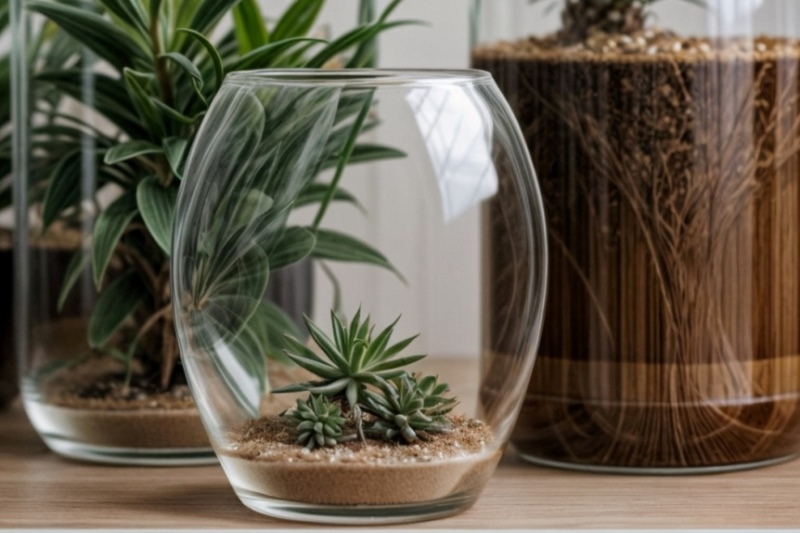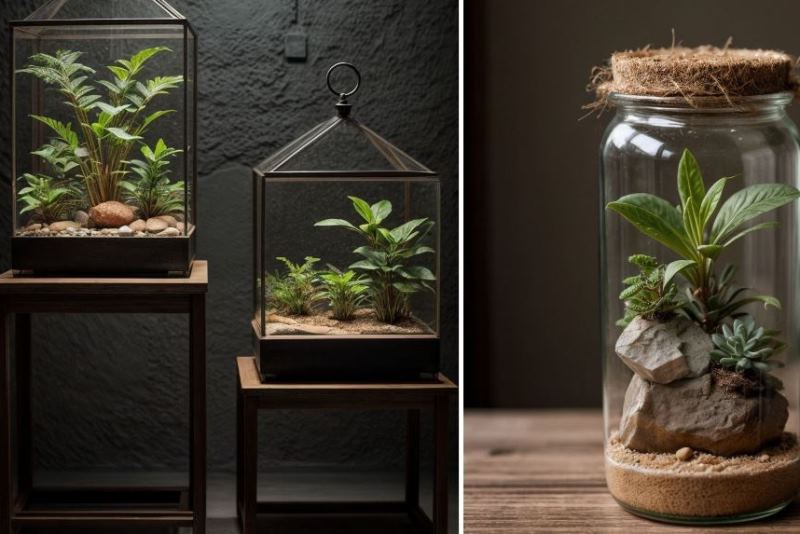Making a terrarium can be a fun and rewarding project! 🌿 🌱
A terrarium is a small, closed ecosystem contained within a transparent container, such as a glass, plastic, or acrylic container. They are designed to resemble miniature forests or gardens.
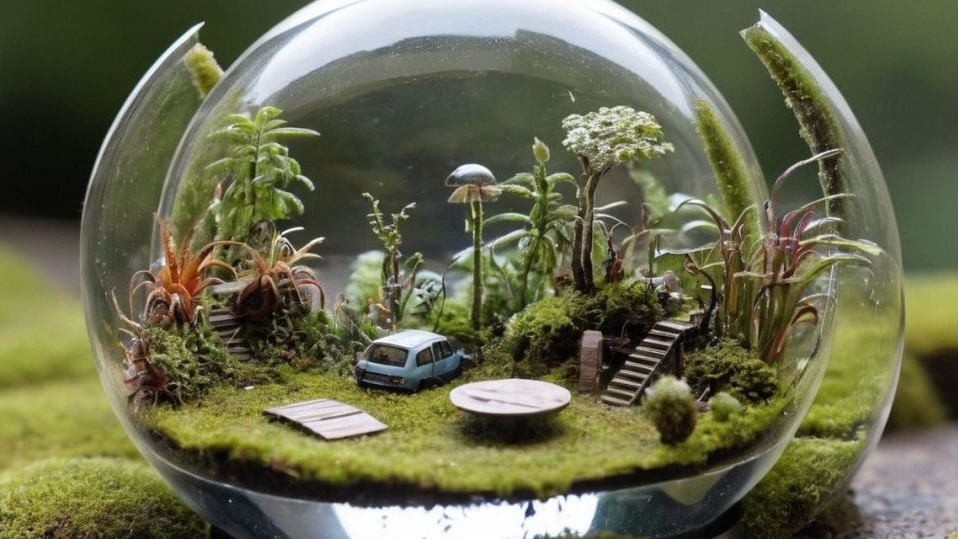
This environment mimics the natural conditions necessary for plant growth and can sometimes also house small animals and exotic pets, such as insects, arachnids, amphibians, snails, or small reptiles.
The container creates a miniaturized ecosystem where plants can grow in a controlled environment.
The closed nature of a terrarium allows a unique microclimate to develop within, with moisture recycling and minimal external input required for maintenance.
Creating Green Spaces at Home with Style and Elegance. Immerse yourself in the fascinating world of terrariums with our comprehensive guide. From plant selection to design and care tips, discover how to create and maintain these captivating miniature ecosystems to beautify your home.

Terrariums for Every Taste
Explore the magic of terrariums with our in-depth exploration. Learn how to grow and customize these enchanting miniature gardens, adding a touch of nature to any indoor space while enjoying their easy maintenance and lasting beauty.
“Closed Escapes: Finding Calm and Balance in Terrarium Gardens”
- Plant Terrarium
- Rodent Terrarium
- Insect Terrarium
- Reptile Terrarium
What terrarium accessories can I buy for my terrarium?
You can find a wide variety of terrarium accessories, covering everything you need to create, decorate, and maintain these small ecosystems. Here is a list of the most common types of accessories you can purchase:
Complete Terrarium Kits:
These kits usually include the glass or plastic container, different layers of substrate (drainage stones, activated charcoal, soil), moss, and, in some cases, basic tools. They are an excellent option for beginners.
Containers and Vessels:
You can find a wide range of options, from vases and glass bottles with lids to geometric or specifically shaped terrariums. There are also plastic containers, which are especially useful for pet terrariums or for starting projects.
Tools for terrarium construction and maintenance:
- Long tweezers: Facilitate the placement of plants and decorative elements in terrariums with small openings.
- Small spatulas and rakes: Help level the substrate and work inside the terrarium.
- Sprayers: For controlled watering, especially in closed terrariums.
- Cleaning brushes: To keep the glass clean inside and out.
Decorative Elements:
- Decorative Moss: Different types of dried or preserved moss to cover the floor and add texture.
- Rocks and Stones: In various shapes, sizes, and colors to create landscapes and structures.
- Wood and Branches: Small logs, dried branches, or driftwood to give a natural touch and verticality.
- Figurines and Miniatures: Small animal figurines, houses, or other elements to add a personal and narrative touch to the terrarium.
- Hides and Caves: Especially for reptile terrariums, providing shelter and resting areas.
Pet terrarium accessories (reptiles, amphibians):
In addition to specific decorative items, Amazon offers accessories such as heating mats, heat or UVB lamps, thermometers and hygrometers to monitor environmental conditions, and containers for water and food.
Substrates and Base Layers:
- Drainage layer: Small stones, volcanic gravel (clay), or ceramic chips to prevent waterlogging.
- Activated charcoal: Helps filter the air and prevent unpleasant odors.
- Sphagnum Moss: Retains moisture and separates the drainage layer from the substrate.
- Plant Substrate: Specific soil mixes for terrariums, often with components that promote drainage and aeration. There are also specialized substrates for reptile terrariums (sand, bark, coconut fiber).
Heating & Environmental Control
Terrarium Heat Lamps & Mats: Essential for maintaining appropriate temperatures for your terrarium inhabitants.
Terrarium Hygrometers & Thermometers: Tools to monitor humidity and temperature levels, ensuring a stable environment.
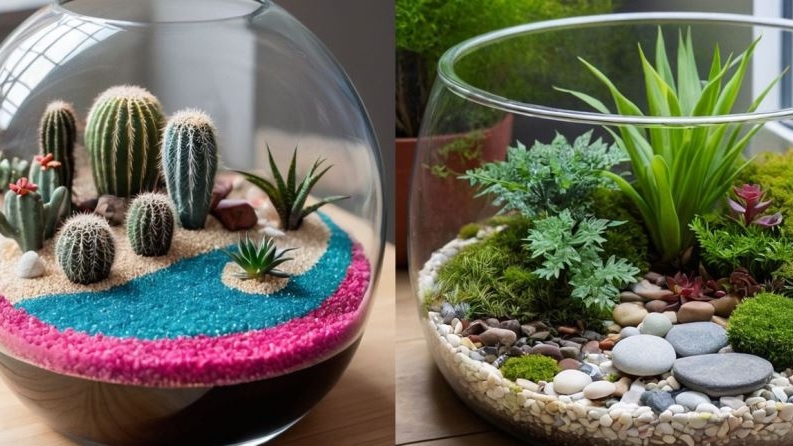
Step-by-Step Guide to Starting a Terrarium Hobby
Getting started with terrariums is a super fun and relaxing hobby—perfect if you love plants, mini landscapes, or crafting tiny worlds. 🌿✨ Here’s a beginner-friendly guide to help you dive in:
- Decide the Type of Terrarium You Want – There are two main types:
- Open Terrarium – Ideal for succulents and cacti that prefer drier air.
- Closed Terrarium – Great for moisture-loving plants (like mosses and ferns).
- Gather Your Materials: Here’s a basic list of what you’ll need:
- Container: Glass jars, fish tanks, or old vases work great.
- Drainage Layer: Small rocks, gravel, or pebbles.
- Charcoal: Helps keep odors and mold in check.
- Soil: Match the soil type to your plants (succulent mix vs. potting mix).
- Plants: Choose small, slow-growing plants.
- Decor (optional): Moss, bark, figurines, mini furniture, fairy lights, etc.
- Tools: Long tweezers, brush, spoon, or a DIY stick tool.
- Build Your Terrarium (Layer by Layer)
- Base Layer – Add small pebbles for drainage.
- Charcoal Layer – Sprinkle activated charcoal to keep the terrarium fresh.
- Soil Layer – Add enough to plant roots comfortably.
- Planting Time – Add your plants, spacing them a little apart.
- Decorate – Add moss, mini rocks, or cute trinkets for flair.
- Choose the Right Location
- Keep it near indirect light (like a north-facing window).
- Avoid direct sunlight—it can overheat your plants like a mini greenhouse.
- Water Carefully
- Closed terrariums: Water sparingly, maybe once every few weeks.
- Open terrariums: Water more frequently but still carefully—avoid overwatering.
What are the best plants to start with?
- For Closed Terrariums: Fittonia, mosses, ferns, baby tears.
- For Open Terrariums: Jade plant, echeveria, haworthia, air plants.
Pro Tips
- Buy a terrarium starter kit on Amazon or Etsy to make it easier.
- Use long tweezers for precise placement of small plants or décor.
- Join Facebook groups or subreddits like r/terrariums for ideas and tips.
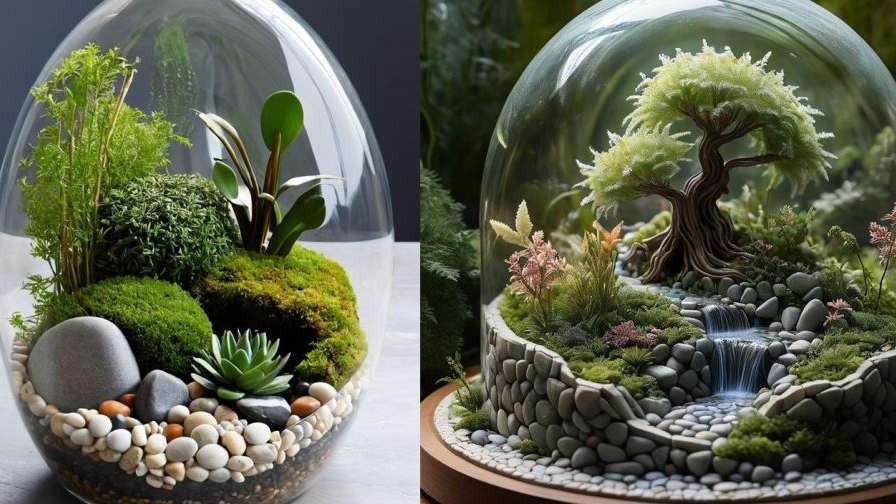
Different Types of Terrariums

Plant Terrarium with Wooden Stand
Here’s why they’re trending and popping up on Pinterest, Instagram, and modern home decor blogs.


